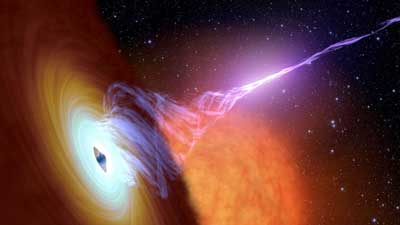 Black holes 'have no hair': no attributes that can be used to tell them apart. Extreme black holes can have an additional property, permanent hair that is made of a massless scalar field. Nearly extreme black holes have hair that is a transient phenomenon: nearly extreme black holes that attempt to regrow hair will lose it and become bald again.
Black holes 'have no hair': no attributes that can be used to tell them apart. Extreme black holes can have an additional property, permanent hair that is made of a massless scalar field. Nearly extreme black holes have hair that is a transient phenomenon: nearly extreme black holes that attempt to regrow hair will lose it and become bald again.
Nov 15th, 2019
Read more
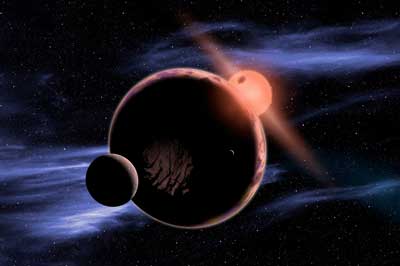 First study to combine 3D climate modeling with chemistry explores M dwarf planets.
First study to combine 3D climate modeling with chemistry explores M dwarf planets.
Nov 14th, 2019
Read more
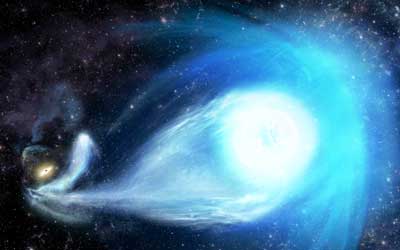 Astronomers have spotted an ultrafast star, travelling at a blistering 6 million km/h, ejected by the supermassive black hole at the heart at the Milky Way five million years ago.
Astronomers have spotted an ultrafast star, travelling at a blistering 6 million km/h, ejected by the supermassive black hole at the heart at the Milky Way five million years ago.
Nov 12th, 2019
Read more
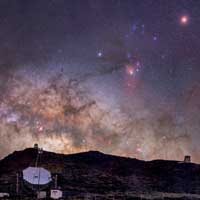 Wielding state-of-the-art technologies and techniques, a team of astrophysicists has added a novel approach to quantifying one of the most fundamental laws of the universe.
Wielding state-of-the-art technologies and techniques, a team of astrophysicists has added a novel approach to quantifying one of the most fundamental laws of the universe.
Nov 8th, 2019
Read more
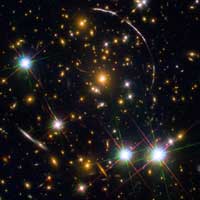 With the powerful eyes of the Hubble Space Telescope, an international team of astronomers observed straight into the bright and hot heart of a galaxy 11 billion years old in no less than 12 multiple, gravitationally lensed images. The finding casts light onto a crucial era in our universe?s history: the epoch of reionization.
With the powerful eyes of the Hubble Space Telescope, an international team of astronomers observed straight into the bright and hot heart of a galaxy 11 billion years old in no less than 12 multiple, gravitationally lensed images. The finding casts light onto a crucial era in our universe?s history: the epoch of reionization.
Nov 8th, 2019
Read more
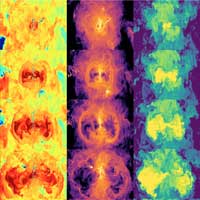 Astronomers have unveiled the results of a newly-completed, state of the art simulation of the evolution of galaxies. It allows researchers to study in detail how galaxies form, and how they have evolved since shortly after the Big Bang. For the first time, it reveals that the geometry of the cosmic gas flows around galaxies determines galaxies? structures, and vice versa.
Astronomers have unveiled the results of a newly-completed, state of the art simulation of the evolution of galaxies. It allows researchers to study in detail how galaxies form, and how they have evolved since shortly after the Big Bang. For the first time, it reveals that the geometry of the cosmic gas flows around galaxies determines galaxies? structures, and vice versa.
Nov 7th, 2019
Read more
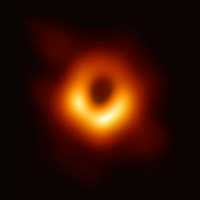 Astronomers have studied the emergence of generalized thermal ensembles in quantum systems with additional symmetries. As a result they found that black holes thermalize the same way ordinary matter does.
Astronomers have studied the emergence of generalized thermal ensembles in quantum systems with additional symmetries. As a result they found that black holes thermalize the same way ordinary matter does.
Nov 5th, 2019
Read more
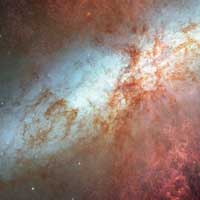 Research offers a critical understanding of a process both in stars and in chemical systems on Earth.
Research offers a critical understanding of a process both in stars and in chemical systems on Earth.
Nov 1st, 2019
Read more
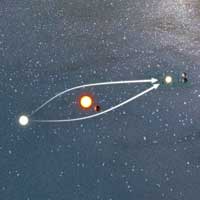 Astronomers using telescopes around the world confirmed and characterized an exoplanet orbiting a nearby star through a rare phenomenon known as gravitational microlensing. The exoplanet has a mass similar to Neptune, but it orbits a star lighter (cooler) than the Sun at an orbital radius similar to Earth's orbital radius.
Astronomers using telescopes around the world confirmed and characterized an exoplanet orbiting a nearby star through a rare phenomenon known as gravitational microlensing. The exoplanet has a mass similar to Neptune, but it orbits a star lighter (cooler) than the Sun at an orbital radius similar to Earth's orbital radius.
Nov 1st, 2019
Read more
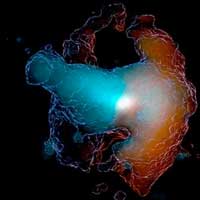 Researchers observe huge outflow of gas extending far beyond a galaxy for the first time.
Researchers observe huge outflow of gas extending far beyond a galaxy for the first time.
Oct 31st, 2019
Read more
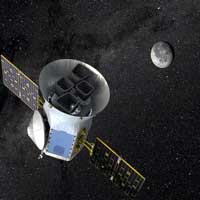 TESS, the Transiting Exoplanet Survey Satellite, is NASA's newest exoplanet mission. TESS will find thousands of new planets orbiting nearby stars. During its two year survey, TESS will watch a wide variety of stars, looking for signs of planets ranging from Earth-size to larger than Jupiter.
TESS, the Transiting Exoplanet Survey Satellite, is NASA's newest exoplanet mission. TESS will find thousands of new planets orbiting nearby stars. During its two year survey, TESS will watch a wide variety of stars, looking for signs of planets ranging from Earth-size to larger than Jupiter.
Oct 31st, 2019
Read more
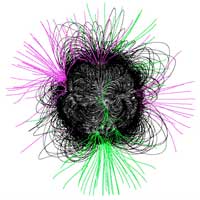 Team models stellar activity on Milky Way neighbors to judge impact on planets.
Team models stellar activity on Milky Way neighbors to judge impact on planets.
Oct 31st, 2019
Read more
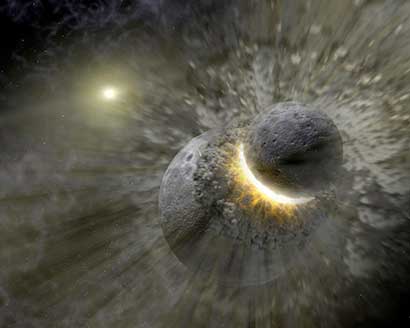 A giant-impacts phase in the evolution of planetary systems can explain the observations of close-in giant planets with eccentric orbits.
A giant-impacts phase in the evolution of planetary systems can explain the observations of close-in giant planets with eccentric orbits.
Oct 30th, 2019
Read more
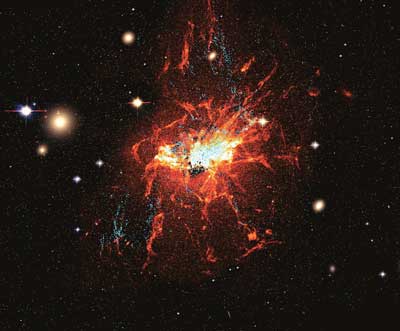 Globular clusters, which have been forming over the last billion years, have been found to exist around the giant galaxy at the centre of the Perseus cluster.
Globular clusters, which have been forming over the last billion years, have been found to exist around the giant galaxy at the centre of the Perseus cluster.
Oct 29th, 2019
Read more
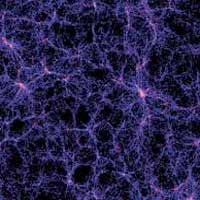 PRISMA+ and HIM scientists report the latest findings of the CASPEr research program.
PRISMA+ and HIM scientists report the latest findings of the CASPEr research program.
Oct 29th, 2019
Read more
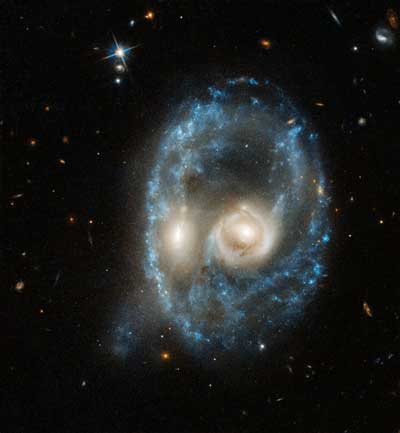 In celebration of Halloween, this new image from the NASA/ESA Hubble Space Telescope captures two galaxies of equal size in a collision that appears to resemble a ghostly face.
In celebration of Halloween, this new image from the NASA/ESA Hubble Space Telescope captures two galaxies of equal size in a collision that appears to resemble a ghostly face.
Oct 28th, 2019
Read more
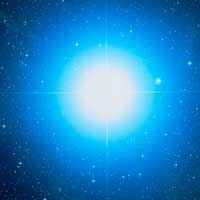 New findings detail a method for investigating the inner workings of stars in a rare phase.
New findings detail a method for investigating the inner workings of stars in a rare phase.
Oct 28th, 2019
Read more
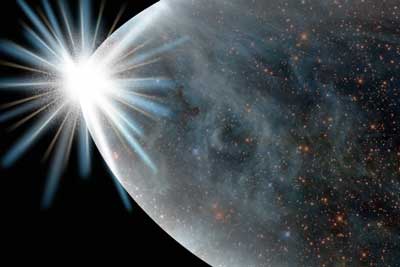 Physicists simulate critical 'reheating' period that kickstarted the Big Bang in the universe's first fractions of a second.
Physicists simulate critical 'reheating' period that kickstarted the Big Bang in the universe's first fractions of a second.
Oct 25th, 2019
Read more
 Black holes 'have no hair': no attributes that can be used to tell them apart. Extreme black holes can have an additional property, permanent hair that is made of a massless scalar field. Nearly extreme black holes have hair that is a transient phenomenon: nearly extreme black holes that attempt to regrow hair will lose it and become bald again.
Black holes 'have no hair': no attributes that can be used to tell them apart. Extreme black holes can have an additional property, permanent hair that is made of a massless scalar field. Nearly extreme black holes have hair that is a transient phenomenon: nearly extreme black holes that attempt to regrow hair will lose it and become bald again.
 Subscribe to our Space Exploration News feed
Subscribe to our Space Exploration News feed















